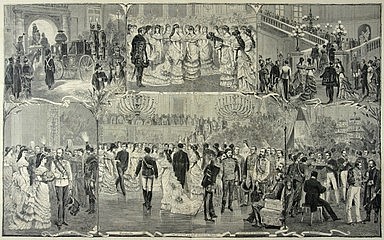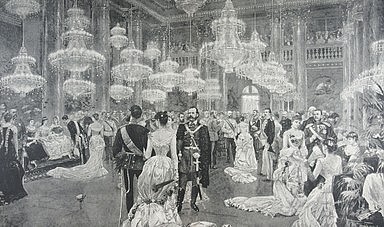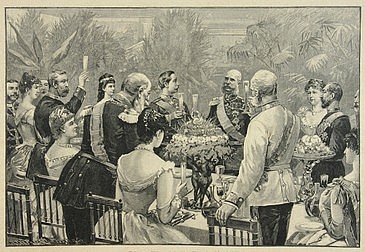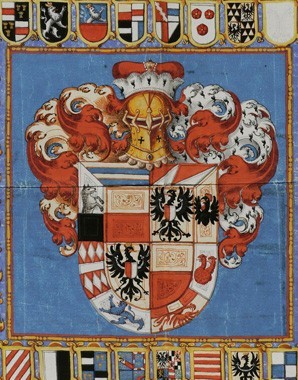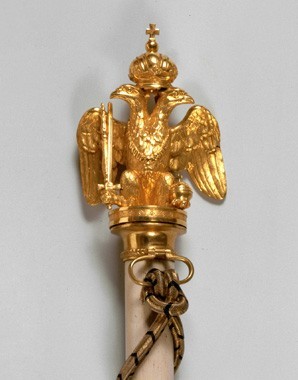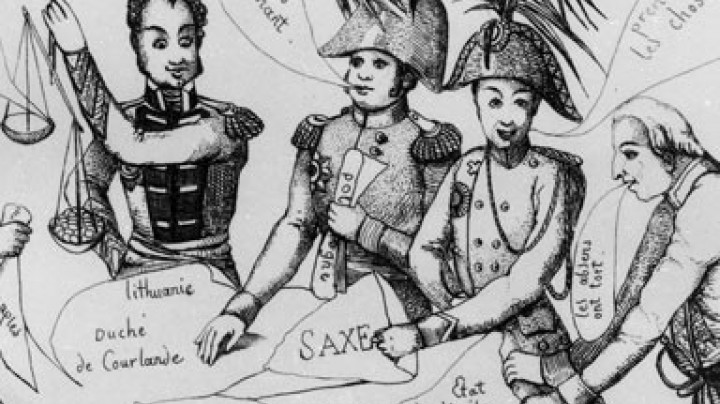The 'first tier' of society - social interaction in the aristocracy
The Viennese nobility was known not only for its elegance but above all for its exclusivity. Whoever was not part of this network, woven over centuries, of the old hereditary nobility had no chance of participating as an equal partner in the social life of the aristocracy.
The greater part of high society life in the imperial capital took place in winter and spring, the first six months of the year being regarded as the season. In the summer and autumn the nobility withdrew to their country estates all over the monarchy. The reason for this lay in the deep historical connections of the nobility with their holdings of land, which not only provided the material basis of their wealth but also gave them their sense of identity and aristocratic standing.
The annual sojourn in Vienna constituted the climax of social interaction within aristocratic society. A seemingly unending round of visits, receptions and invitations took place during the first part of the year. For members of this class, it was imperative to fulfil one’s social duties, to appear in the evening at the Opera, at soirees and receptions, and during the day to visit friends and relatives. It represented the ideal opportunity of cultivating one’s contacts, as all one’s peers were present in the imperial capital during the season.
One of the most important elements of aristocratic social life was the institution of the salon, a fixed point in the round of aristocratic daily life. At pre-determined times of day leading society ladies held their salons, where members of the nobility could appear without an explicit invitation and which thus became a meeting place for members of the same rank. At these salons, the aristocracy met to exchange news from the political and cultural life of the imperial capital, and not least to hear the latest gossip. This ritual of paying reciprocal calls within one’s own exclusive social circle reinforced the strong bonds between those who belonged to the upper echelons of society.
Carnival was a time of amusements of every kind. Alongside the public balls, open to the entire beau monde of Vienna, there were the even more exclusive ‘house balls’ held by the leading families of the nobility at their town palaces. It was not possible to buy tickets to these events; only guests who received a personal invitation were admitted – and here too the old Austrian aristocracy placed the highest value on social exclusivity. The so-called ‘first tier’ of society, that is, the members of the hereditary nobility who were admitted at Court, kept jealous watch to ensure that this exclusive social status was preserved. Whoever belonged to this select circle had access to a world of refined elegance and exquisite taste; aristocratic families vied with one another in magnificent displays of splendour.
Lasting only a few months, the social season was in certain respects a strain for all concerned, both mentally and materially. Immense amounts of money and energy were expended, as each aristocratic family held a ball; during Carnival there were often two to three of these events to be attended each week. Given the great importance placed on appearances by Viennese aristocratic society, ladies in particular vied to outdo their peers with a constantly new repertoire of couture creations, with the result that each year the Viennese luxury goods trade was assured of healthy sales.
